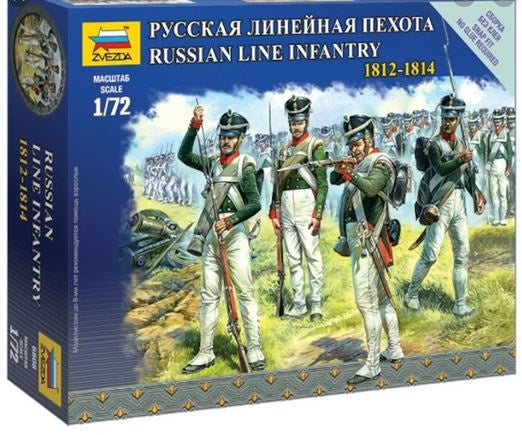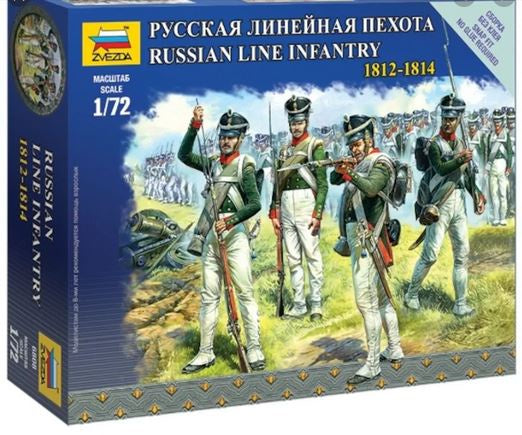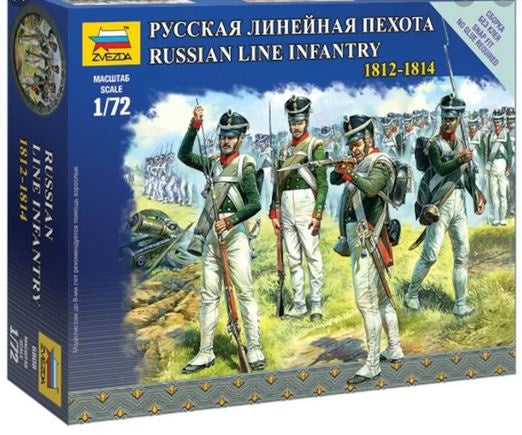Zvezda 1:72 Russian Line Infantry (1812 - 1814)
Zvezda 1:72 Russian Line Infantry (1812 - 1814) is backordered and will ship as soon as it is back in stock.
Couldn't load pickup availability
Delivery and Shipping
Delivery and Shipping
We use tracked courier for fast delivery New Zealand wide
Description
Description
Zvezda 1:72 Russian Line Infantry (1812 - 1814) Plastic Model
Line infantry was the type of infantry that composed the basis of European land armies from the mid-17th century to the mid-19th century. Maurice of Nassau and Gustavus Adolphus are generally regarded as its pioneers, while Turenne and Montecuccoli are closely associated with the post-1648 development of linear infantry tactics. For both battle and parade drill, it consisted of two to four ranks of foot soldiers drawn up side by side in rigid alignment, and thereby maximizing the effect of their firepower. By extension, the term came to be applied to the regular regiments "of the line" as opposed to light infantry, skirmishers, militia, support personnel, plus some other special categories of infantry not focused on heavy front line combat.
Line infantry mainly used three formations in its battles: the line, the square, and the column.
With the massive proliferation of small arms (firearms that could be carried by hand, as opposed to cannon) in the infantry units from the mid-17th century, the battlefield was dominated by linear tactics, according to which the infantry was aligned into long thin lines and fired volleys. A line consisted of 2, 3, or 4 ranks of soldiers.
The soldiers were supposed to fire volleys at the command of officers, but in practice this happened only in the first minutes of the battle. After one or two volleys, each soldier charged a musket and fired at his own discretion, without hearing the commands of the officers. This brought confusion to the system, and the smoke interfered with accurate shooting. Such a shootout in a puff of smoke could occur for a very long period of time and the result was unpredictable. In addition, at the time of the “hot” shootout, the soldiers were so busy and focused on shooting that they could not notice the attack of cavalry from the flank. Therefore, experienced troops tried to avoid such costly shootouts and restrained their soldiers from premature firing, in order to get as close to the enemy’s line as possible to deliver several crushing volleys at a short distance. In some cases, it was possible to overturn the enemy with just one volley at a short distance. The line was considered the fundamental battle formation as it allowed for the largest deployment of firepower. Troops in skirmish formation, though able to take cover and use initiative, were highly vulnerable to cavalry and could not hold ground against advancing infantry columns. Line infantry provided an 'anchor' for skirmishers and cavalry to retreat behind if threatened.
Payment & Security
Payment methods
Your payment information is processed securely. We do not store credit card details nor have access to your credit card information.




